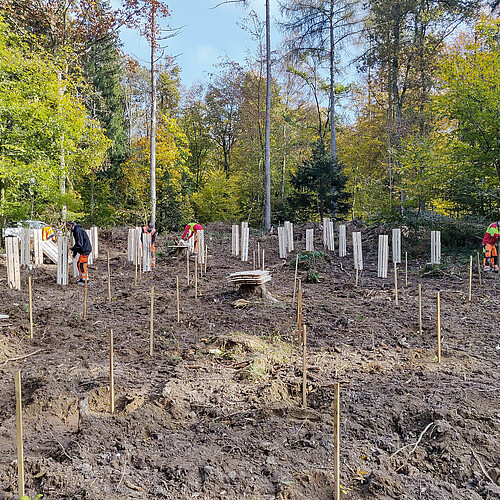- Knowledge
Cluster management in a changing climate: possibility of thinning
01.11.2024
In the context of climate change, mountain forests constrained by temperature limitations are experiencing higher soil temperatures, promoting the growth of spruce (Picea abies). In the subalpine altitudinal zone, this has led to an increased expansion of the spruce crowns, resulting in narrower corridors between the clusters. The vigorous growth of edge trees’ crowns exceeds expectations, suggesting that the corridor spacing in the study area may not adequately maintain the green crowns of the edge trees in the long term. To investigate the influence of different management types (thinned vs. unthinned) and positions (edge vs. centre) on tree growth and response to drought, we conducted dendrochronological analyses on twelve clusters in a protective forest in the Surselva region. Six clusters followed traditional cluster management practices, while the remaining six were thinned in 2012. The thinned clusters showed higher basal area increments as well as greater growth resistance to drought, particularly among edge trees. Today, the forest is in stable conditions. However, with the ongoing influence of climate change, mountain forests will not only experience a rise in average annual temperatures but also face an increasing threat from both biotic and abiotic disturbances. Thinning at a young stand age may offer a strategic approach to reduce the vulnerability of spruce to drought, especially in areas limited by drought.



